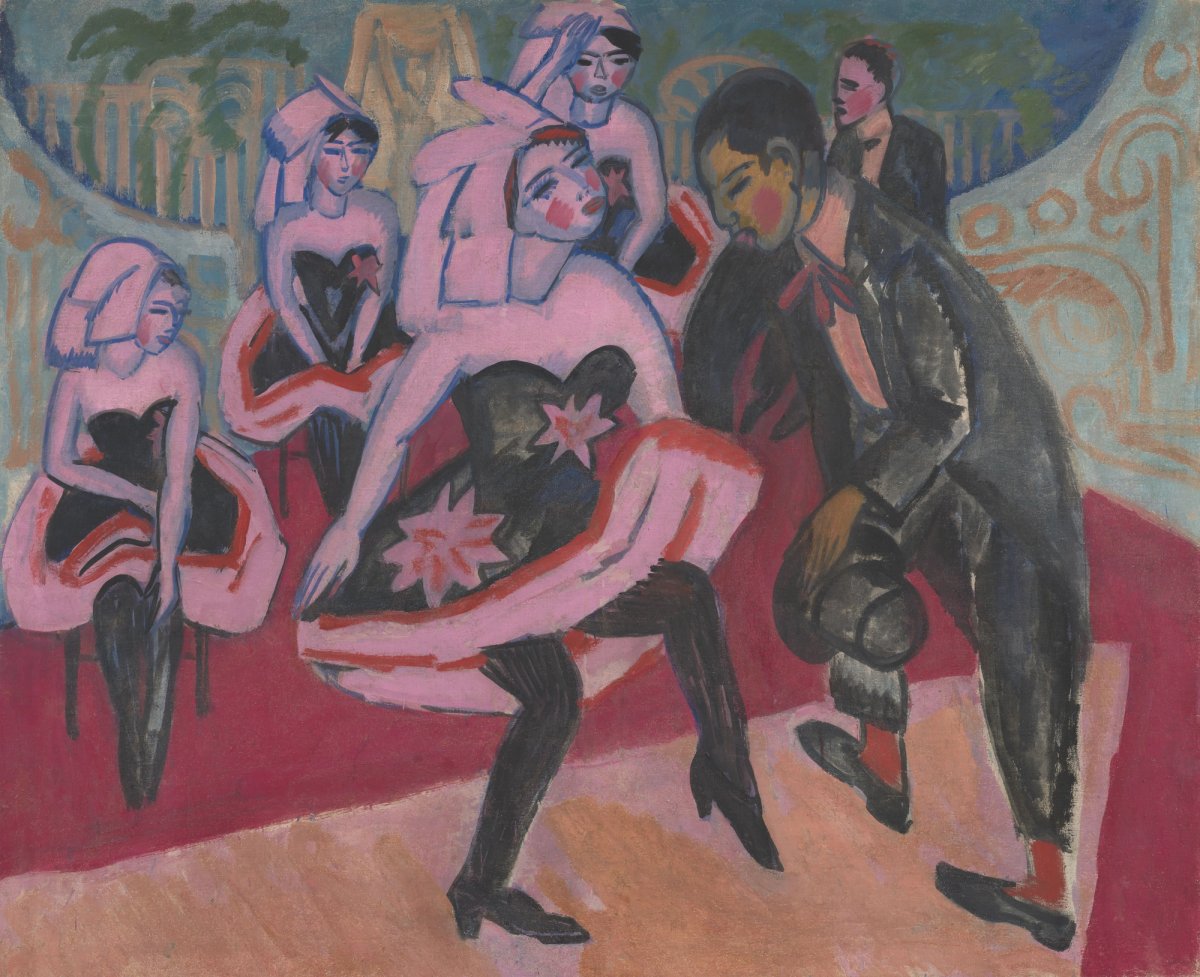A painting by the German Expressionist artist Ernst Ludwig Kirchner that was thought to have been lost for decades has gone on display at the Kunstmuseum Basel, more than 100 years after it was last exhibited.
Tanz im Varieté (Dance at the Varieté, 1911) was restored at the museum over a number of months, and has now been added to the museum’s Paarlauf (Pairings) exhibition. It is expected to remain on display until July 2027.
Previously only known through photographs taken by Kirchner, Tanz im Varieté unexpectedly came up for auction last year at Ketterer Kunst in Munich and was purchased by the Swiss-based Im Obersteg Foundation for around €7m. The foundation’s collection—drawn from the acquisitions of the Swiss father and son collectors Karl and Jürg Im Obersteg—is on permanent loan to the Kunstmuseum Basel.
The oil painting, which depicts two people performing the cakewalk—a dance that originated among enslaved African Americans in the 19th century—is last thought to have been exhibited in Berlin in 1923.
Géraldine Meyer, the curator of the Im Obersteg collection, explains that “after that, black-and-white photographs taken by Kirchner still existed but the public did not know where the work was. Only now, with the family having brought the work to the auction house in Munich, has it been possible to trace the entire provenance history of this work.”
According to Ketterer Kunst’s catalogue notes, the painting was purchased by the German collector Max Glaeser around 1930, and remained part of his estate until 1944—a period within which Kirchner’s art was declared “degenerate” by the Nazis.
In 1944, the work was purchased by a Munich-based collector and moved to the countryside of the neighbouring German state of Baden-Württemberg for safekeeping. It was, however, discovered a year later in a crate by French soldiers who are said to have damaged it, with the painting struck by a bullet and pierced by a bayonet. The soldiers left the crate and painting behind, and the work remained in the same family ownership until its recent sale.
After the Second World War, the painting was restored at the Kunsthalle Karlsruhe, in southwestern Germany, with evidence of the historical damage now only visible on the rear of the canvas.
The two main tasks for restorers at the Kunstmuseum Basel involved stabilising the paint layer and cleaning the surface, guided by a digital reconstruction of the work.
Meyer describes Tanz im Varieté as “a major painting from Kirchner’s Dresden period, capturing the dynamic atmosphere of modern urban nightlife”. She adds that “the acquisition of this painting is particularly significant, as it fills a long-standing gap in the collection and reflects the historical relationship between Kirchner and the foundation’s founder, Karl Im Obersteg, who actively promoted the artist but never acquired one of his works himself.”





